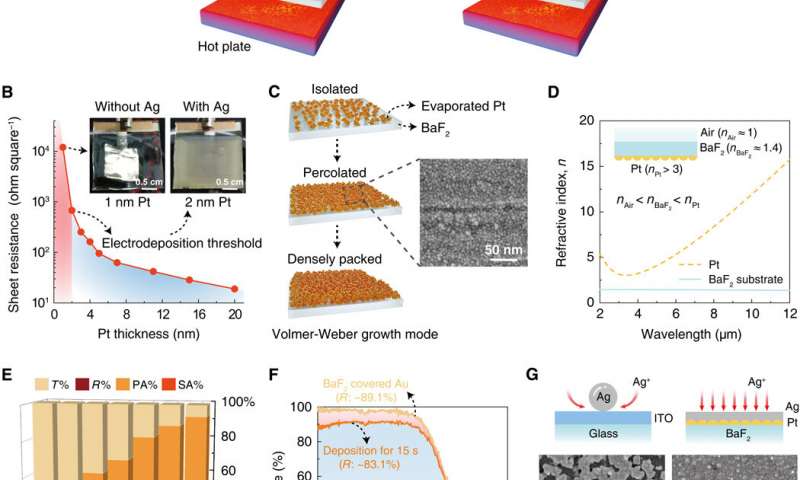Many species have naturally evolved remarkable
strategies to visually adapt to their environments for protection
and predation. Researchers have studied adaptive camouflaging in
the infrared (IR) spectrum, although the method is highly
challenging to develop in the lab. In a new report now published on
Science Advances, Mingyang Li and a research team at the National
University of Defense Technology in China, developed adaptive
thermal camouflage devices that bridged the optical and radiative
properties of nanoscopic platinum (Pt) and silver (Ag)
electro-deposited Pt films. The metal-based devices maintained
large, uniform, and consistent IR tunabilities in the mid-wave IR
(MWIR) and long-wave IR (LWIR) atmospheric transmission windows
(ATWs). The team multiplexed and enlarged the devices, allowing
flexibility for camouflaging capabilities. The technology is
advantageous across a variety of camouflage platforms and in many
thermal radiation management technologies.




